Japan Cultural Tourism offers a captivating journey through ancient traditions, artistic expressions, and unique customs. SIXT.VN helps you dive deep into this cultural richness, offering tailored travel experiences that connect you with Japan’s heart and soul. Discover ways to immerse yourself in this incredible heritage with our expert guidance and convenient travel solutions.
1. What is Japan Cultural Tourism and Why is it So Appealing?
Japan cultural tourism refers to travel experiences focused on exploring and appreciating the cultural heritage of Japan. According to the Japan National Tourism Organization (JNTO), cultural tourism has seen a steady increase, with many visitors seeking authentic experiences beyond the typical tourist spots. This appeal lies in the profound sense of history, artistry, and unique traditions that Japan offers.
Japan’s cultural tourism is appealing because it allows travelers to:
- Experience Authentic Traditions: Engage with practices like tea ceremonies, calligraphy, and traditional arts.
- Explore Historical Sites: Visit ancient temples, shrines, and castles that showcase Japan’s rich history.
- Enjoy Unique Festivals: Participate in local festivals (matsuri) that celebrate Japanese culture and community.
- Savor Traditional Cuisine: Indulge in the artistry of Japanese cuisine, from sushi to kaiseki dinners.
- Immerse in Arts and Crafts: Discover traditional crafts like pottery, textiles, and woodworking.
2. How Can You Immerse Yourself in Traditional Japanese Arts and Crafts?
Immersing yourself in traditional Japanese arts and crafts provides a hands-on understanding of Japan’s cultural heritage. Many workshops and classes are available for tourists to learn these skills.
Here are several ways to experience Japanese arts and crafts:
- Calligraphy (Shodo): Take a calligraphy class to learn the art of beautiful writing using traditional brushes and ink.
- Pottery (Yakimono): Visit pottery towns like Seto or Kyoto to participate in pottery-making workshops.
- Textile Dyeing (Yuzen): Learn about the intricate art of Yuzen dyeing and create your own dyed fabrics.
- Paper Making (Washi): Experience the traditional process of making Washi paper, known for its strength and beauty.
- Flower Arranging (Ikebana): Attend an Ikebana class to learn the art of minimalist and symbolic flower arrangement.
According to a study by the Agency for Cultural Affairs, participating in cultural activities enhances the travel experience and fosters a deeper appreciation for Japanese culture.
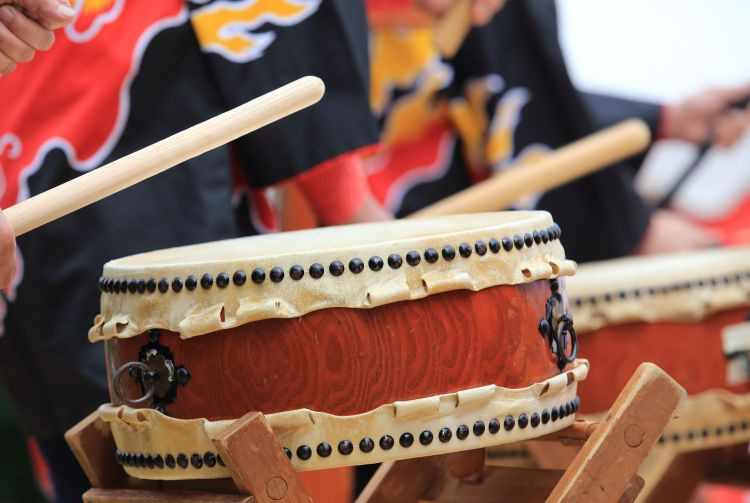 Experience the ancient artistry of Japanese flower arrangement, known as Ikebana, and learn its deep-rooted connection to Shintoism.
Experience the ancient artistry of Japanese flower arrangement, known as Ikebana, and learn its deep-rooted connection to Shintoism.
3. What are Ryokans and How Do They Offer a Unique Cultural Experience?
Ryokans are traditional Japanese inns that offer a unique cultural experience through traditional architecture, hospitality, and customs. Staying in a ryokan allows visitors to experience the essence of Japanese culture firsthand.
Key features of a ryokan stay include:
- Tatami Rooms: Sleeping on futon beds laid out on tatami mats.
- Onsen (Hot Springs): Enjoying public or private natural hot springs.
- Kaiseki Dinners: Savoring multi-course traditional Japanese meals.
- Yukata: Wearing a traditional cotton robe provided by the ryokan.
- Traditional Architecture: Experiencing the beauty of traditional Japanese design.
The Japanese Ryokan Association emphasizes that ryokans are not just accommodations but cultural institutions that preserve and promote Japanese traditions.
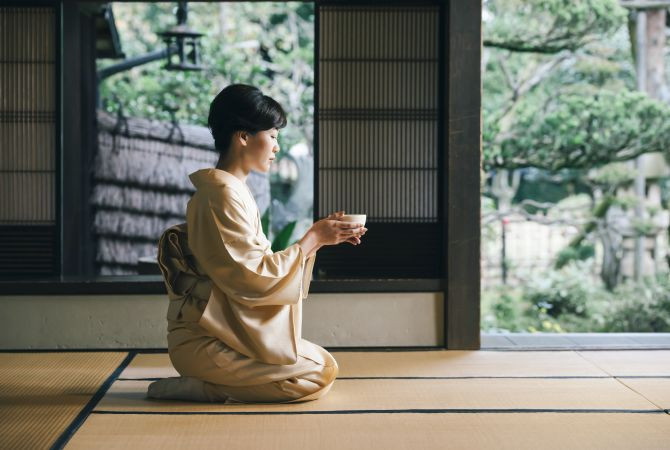 Experience world-renowned Japanese hospitality in an authentic setting by staying in a traditional Ryokan.
Experience world-renowned Japanese hospitality in an authentic setting by staying in a traditional Ryokan.
4. How Can You Participate in a Traditional Japanese Tea Ceremony?
Participating in a traditional Japanese tea ceremony (Chado or Sado) is a profound way to experience Japanese culture. The tea ceremony is a ritualized way of preparing and drinking matcha (green tea), emphasizing harmony, respect, purity, and tranquility.
Here’s how to participate in a tea ceremony:
- Find a Tea Room: Many tea rooms in major cities like Kyoto and Tokyo offer tea ceremony experiences for tourists.
- Learn the Etiquette: Understand the specific customs and etiquette involved, such as bowing and handling the tea bowl.
- Observe the Host: Watch the host carefully as they prepare and serve the tea with precise movements.
- Enjoy the Tea: Appreciate the taste of the matcha and the serene atmosphere of the ceremony.
According to the Urasenke Foundation, one of the leading tea ceremony schools, the tea ceremony is a way to cultivate mindfulness and appreciation for the present moment.
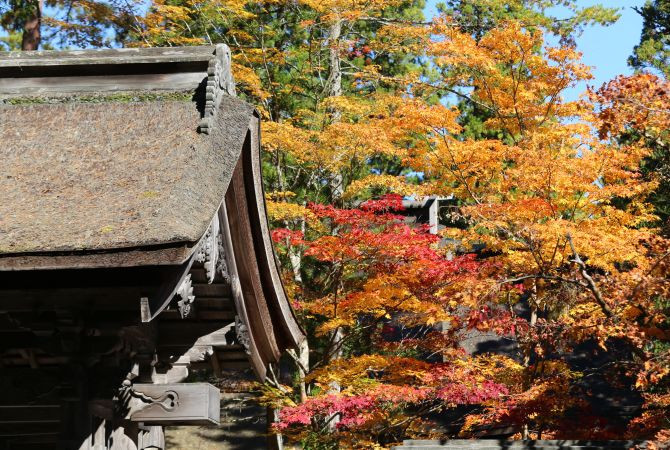 Learn the rich history and the importance of ritual and attention to detail at a Japanese tea ceremony.
Learn the rich history and the importance of ritual and attention to detail at a Japanese tea ceremony.
5. What are Shukubo Temple Stays and How Can They Enhance Cultural Understanding?
Shukubo are temple stays that allow you to experience the life of a Buddhist monk. Staying in a temple offers a unique opportunity to learn about Buddhism and Japanese spirituality.
Benefits of a shukubo stay include:
- Meditation Sessions: Participating in morning meditation sessions with the monks.
- Temple Cuisine (Shojin Ryori): Eating vegetarian meals prepared according to Buddhist principles.
- Temple Activities: Assisting with temple chores and attending religious ceremonies.
- Spiritual Environment: Immersing yourself in the peaceful and reflective atmosphere of the temple.
Koyasan in Wakayama Prefecture is a popular destination for shukubo stays, with many temples offering accommodations and activities for visitors, mentioned Wakayama Prefecture Tourism Federation.
 Live a monastic life and discover more about Buddhism through immersion by living like a monk.
Live a monastic life and discover more about Buddhism through immersion by living like a monk.
6. How Can You Experience Geisha Culture Authentically?
Experiencing geisha culture authentically involves understanding the history, artistry, and traditions associated with these skilled entertainers. Geisha are highly trained in various arts, including music, dance, and conversation.
Here are ways to experience geisha culture:
- Visit Geisha Districts: Explore geisha districts like Gion in Kyoto, where geisha still live and work.
- Attend Geisha Performances: Watch geisha perform traditional dances and music at special events or tea houses.
- Hire a Geisha: Arrange a private geisha experience through reputable agencies that support ethical practices.
According to Kyoto City Tourism Association, it is important to respect geisha and their privacy, avoiding intrusive behavior like unauthorized photography.
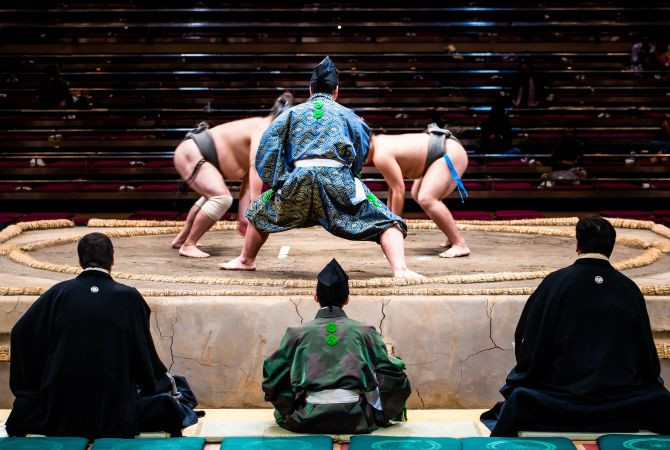 Geisha are a strong representation of Japanese cultural heritage through performances from the past.
Geisha are a strong representation of Japanese cultural heritage through performances from the past.
7. Why is Sumo Wrestling an Important Part of Japanese Culture and How Can You Watch a Match?
Sumo wrestling is an important part of Japanese culture, rooted in ancient Shinto rituals and traditions. Watching a sumo match provides insight into the discipline, strength, and cultural significance of this sport.
Here’s how to watch a sumo match:
- Attend a Tournament: Six major sumo tournaments are held annually in Tokyo, Osaka, Nagoya, and Fukuoka.
- Buy Tickets in Advance: Purchase tickets online or through authorized vendors, as they tend to sell out quickly.
- Understand the Rules: Familiarize yourself with the rules and customs of sumo wrestling to fully appreciate the match.
- Enjoy the Atmosphere: Immerse yourself in the energetic atmosphere of the arena, cheering on the wrestlers.
The Japan Sumo Association highlights that sumo is not just a sport but a cultural event that embodies Japanese values and traditions.
 Witness the collision of big bodies in an ancient sport as Sumo dates back more than 1,500 years and remains a very popular sport in Japan.
Witness the collision of big bodies in an ancient sport as Sumo dates back more than 1,500 years and remains a very popular sport in Japan.
8. What are Matsuri (Festivals) and How Can You Participate in Them?
Matsuri are Japanese festivals that celebrate various aspects of Japanese culture, from religious events to seasonal celebrations. Participating in matsuri offers a vibrant and immersive cultural experience.
Here’s how to participate in matsuri:
- Check the Local Calendar: Research local festival schedules to find events happening during your visit.
- Join the Festivities: Participate in festival activities like parades, dances, and games.
- Sample Festival Food: Enjoy traditional festival foods like yakitori, takoyaki, and shaved ice.
- Wear Traditional Clothing: Consider wearing yukata (summer kimono) to fully immerse yourself in the festival atmosphere.
According to the National Tourism Organization, matsuri are a great way to experience local culture and interact with Japanese communities.
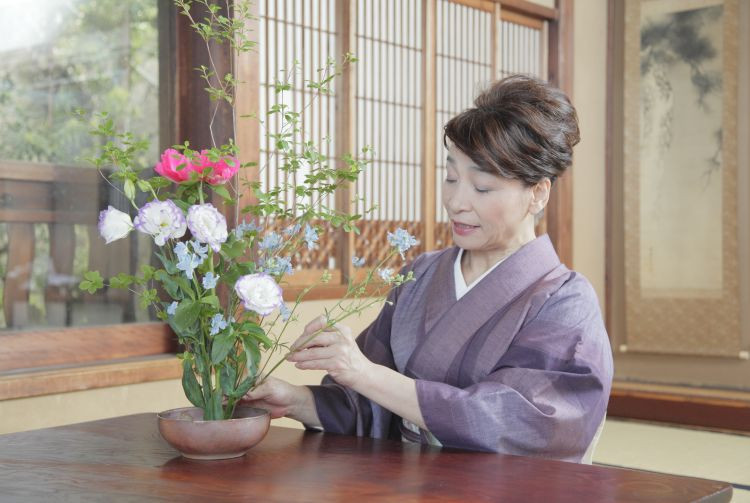 Get involved in one of the many Matsuri (Japanese festivals) because each one is different, but you are sure to find many food stalls, people sporting traditional dress, dances, and marches through the streets.
Get involved in one of the many Matsuri (Japanese festivals) because each one is different, but you are sure to find many food stalls, people sporting traditional dress, dances, and marches through the streets.
9. How Can You Learn About Japanese Cuisine Through Cooking Classes?
Learning about Japanese cuisine through cooking classes provides a hands-on understanding of the ingredients, techniques, and cultural significance of Japanese dishes.
Here’s how to learn about Japanese cuisine:
- Sushi Making: Learn to make sushi from scratch, including preparing the rice and selecting fresh ingredients.
- Ramen Cooking: Discover the secrets of making authentic ramen, from the broth to the noodles.
- Tempura Preparation: Master the art of tempura, achieving the perfect crispy texture.
- Home-Style Cooking: Learn to prepare traditional home-style dishes like miso soup, grilled fish, and pickled vegetables.
Many cooking schools and culinary centers offer classes in English, making it accessible for international visitors, highlights Japan Food Culture Association.
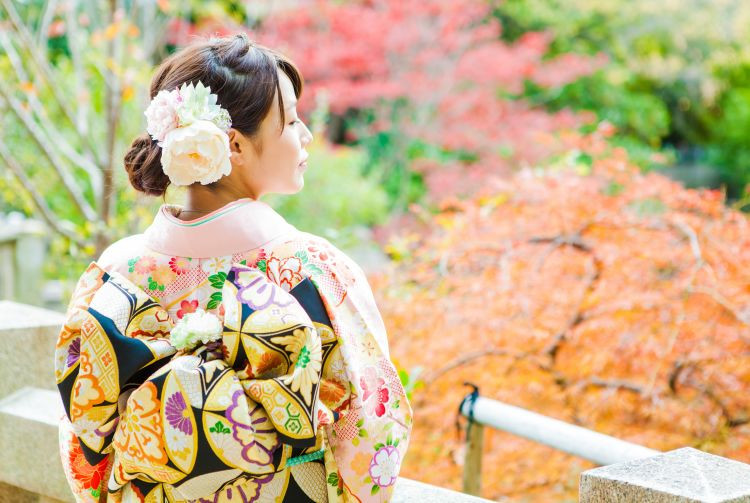 Enjoy a slice of Japanese cuisine because Sushi is Japanese cuisine that is celebrated internationally.
Enjoy a slice of Japanese cuisine because Sushi is Japanese cuisine that is celebrated internationally.
10. What is the Significance of Kimono and How Can You Experience Wearing One?
The kimono is a traditional Japanese garment that holds significant cultural importance, representing elegance, tradition, and artistry. Experiencing wearing a kimono allows you to connect with Japan’s cultural heritage.
Here’s how to experience wearing a kimono:
- Rent a Kimono: Many rental shops offer kimono rental services for tourists, providing a variety of styles and sizes.
- Wear it for Special Occasions: Wear a kimono for special occasions like tea ceremonies, festivals, or temple visits.
- Learn About the Etiquette: Understand the proper way to wear and care for a kimono, respecting its cultural significance.
The Japan Textile and Apparel Association emphasizes that kimono are not just clothing but works of art that reflect Japanese aesthetics and craftsmanship.
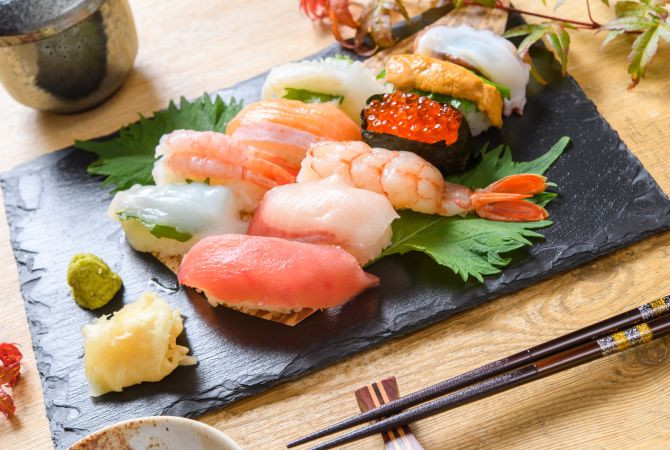 Wear the elegant Japanese Kimono because it used to be the everyday dress for women across the country, but today it's often only worn for special occasions, like weddings or funerals.
Wear the elegant Japanese Kimono because it used to be the everyday dress for women across the country, but today it's often only worn for special occasions, like weddings or funerals.
11. What Unique Cultural Experiences Can You Find in Kyoto?
Kyoto, the former imperial capital of Japan, is renowned for its rich cultural heritage and historical significance. This city offers a plethora of unique experiences that allow visitors to immerse themselves in traditional Japanese culture.
Here are some unique cultural experiences you can find in Kyoto:
- Visit Fushimi Inari Shrine: Explore the thousands of vibrant red torii gates winding up the mountainside. This iconic shrine is dedicated to Inari, the god of rice and prosperity.
- Explore Arashiyama Bamboo Grove: Wander through the towering bamboo stalks in this serene and picturesque forest.
- Attend a Traditional Tea Ceremony: Partake in a formal tea ceremony to experience the art of preparing and drinking matcha.
- Stroll Through Gion District: Wander through the historic geisha district, known for its preserved wooden machiya houses.
- Visit Kinkaku-ji (Golden Pavilion): Marvel at the stunning golden temple reflected in the surrounding pond.
According to the Kyoto City Tourism Association, these attractions and activities provide a deep dive into Kyoto’s cultural landscape.
12. What are Some Lesser-Known Cultural Gems in Rural Japan?
Beyond the bustling cities, rural Japan offers a treasure trove of lesser-known cultural gems that provide authentic and unique experiences. These hidden gems allow you to discover the true essence of Japanese culture.
Here are some cultural experiences in rural Japan:
- Shirakawa-go: Visit this UNESCO World Heritage Site, known for its traditional gassho-style farmhouses with steeply pitched roofs.
- Takayama: Explore this well-preserved Edo-period town with its historic streets, traditional crafts, and local festivals.
- Kanazawa: Discover the Kenrokuen Garden, one of Japan’s three most beautiful landscape gardens, and explore the old samurai district of Nagamachi.
- Tsumago and Magome: Hike along the historic Nakasendo Trail, connecting these charming post towns that once served as resting spots for travelers.
- Shikoku Pilgrimage: Embark on a spiritual journey along the 88-temple pilgrimage route on the island of Shikoku, experiencing the natural beauty and local hospitality.
The Japan National Tourism Organization (JNTO) encourages travelers to explore rural areas to discover the rich cultural diversity of Japan.
13. How Can You Ensure Ethical and Responsible Cultural Tourism in Japan?
Ensuring ethical and responsible cultural tourism in Japan involves respecting local customs, supporting local communities, and preserving cultural heritage. By practicing responsible tourism, you can contribute positively to the sustainability of Japan’s cultural treasures.
Here’s how to ensure ethical and responsible cultural tourism:
- Respect Local Customs: Learn about and adhere to local customs and etiquette, such as removing shoes before entering homes and temples.
- Support Local Businesses: Patronize local businesses, restaurants, and shops to support the local economy.
- Preserve Cultural Heritage: Avoid touching or damaging historical artifacts and sites, and follow guidelines for preserving cultural heritage.
- Be Mindful of the Environment: Practice eco-friendly travel habits, such as reducing waste and using public transportation.
- Respect Privacy: Be respectful of people’s privacy, especially in residential areas and during religious ceremonies.
According to the Japan Tourism Agency, sustainable tourism practices are crucial for preserving Japan’s cultural and natural resources for future generations.
14. What Role Does Language Play in Experiencing Japanese Culture and How Can You Overcome the Language Barrier?
Language plays a significant role in experiencing Japanese culture, as it opens doors to deeper understanding and meaningful interactions. While the language barrier can be a challenge, there are several ways to overcome it and enhance your cultural experience.
Here’s how to address the language barrier:
- Learn Basic Phrases: Memorize basic Japanese phrases such as “Konnichiwa” (hello), “Arigato” (thank you), and “Sumimasen” (excuse me).
- Use Translation Apps: Utilize translation apps on your smartphone to communicate with locals and understand signs and menus.
- Hire a Translator: Consider hiring a local translator or guide to assist you during your cultural explorations.
- Take Language Classes: Enroll in a basic Japanese language class before your trip to gain a foundational understanding of the language.
- Be Patient and Respectful: Even without fluency, being patient and respectful in your interactions can go a long way in fostering positive connections.
The Japan Foundation promotes Japanese language education and cultural exchange to facilitate better understanding between Japan and the world.
15. How Can SIXT.VN Enhance Your Japan Cultural Tourism Experience?
SIXT.VN can significantly enhance your Japan cultural tourism experience by providing convenient and reliable services that cater to your travel needs. From transportation to accommodations and guided tours, SIXT.VN ensures a seamless and enriching journey.
Here’s how SIXT.VN can assist you:
- Airport Transfers: Arrange for hassle-free airport transfers to your hotel or ryokan, ensuring a smooth start to your cultural adventure.
- Hotel Bookings: Book accommodations that reflect Japanese aesthetics and hospitality, such as ryokans or traditional hotels.
- Guided Tours: Join guided tours led by knowledgeable locals to explore historical sites, temples, and cultural landmarks.
- Transportation Services: Rent a car or utilize public transportation options to navigate Japan efficiently and comfortably.
- Travel Support: Receive travel support and assistance from SIXT.VN’s customer service team, ensuring a stress-free cultural exploration.
With SIXT.VN, your Japan cultural tourism experience will be well-organized, enjoyable, and deeply immersive.
16. What are Some Unique Etiquette Tips to Remember When Visiting Japan?
Visiting Japan involves adhering to specific etiquette guidelines that demonstrate respect for local customs and traditions. Remembering these tips will enhance your cultural experience and foster positive interactions with Japanese people.
Here are some unique etiquette tips to remember:
- Remove Shoes: Take off your shoes before entering homes, temples, and traditional restaurants. Slippers are usually provided.
- Use Chopsticks Properly: Avoid sticking chopsticks upright in a bowl of rice, as this resembles a funeral ritual.
- Avoid Loud Talking: Refrain from speaking loudly in public places, especially on trains and in quiet areas.
- Bowing: Bowing is a common greeting and expression of gratitude. A slight bow is usually sufficient for tourists.
- Tipping is Not Customary: Tipping is generally not expected in Japan. Instead, exceptional service is considered standard.
The Japan Etiquette Association provides resources and guidelines on Japanese customs and etiquette for international visitors.
17. What is the Significance of Gardens in Japanese Culture and How Can You Explore Them?
Gardens hold profound significance in Japanese culture, representing harmony, balance, and tranquility. Exploring Japanese gardens allows you to appreciate the beauty of nature and the artistry of garden design.
Here’s how to explore Japanese gardens:
- Visit Famous Gardens: Explore renowned gardens such as Kenrokuen in Kanazawa, Korakuen in Okayama, and Ritsurin Garden in Takamatsu.
- Understand Garden Design: Learn about the elements of Japanese garden design, including rocks, water, plants, and stone lanterns.
- Attend Garden Tours: Join guided tours led by knowledgeable experts to gain insights into the history and symbolism of the gardens.
- Practice Mindfulness: Take your time to stroll through the gardens, appreciating the serene atmosphere and natural beauty.
According to the Japanese Garden Society, gardens are an integral part of Japanese cultural heritage, reflecting the values of harmony and respect for nature.
18. How Can You Experience Traditional Japanese Music and Performing Arts?
Experiencing traditional Japanese music and performing arts provides a window into the rich cultural heritage of Japan. From classical music to theatrical performances, there are numerous ways to immerse yourself in these artistic expressions.
Here’s how to experience Japanese music and performing arts:
- Attend Noh and Kabuki Performances: Watch Noh and Kabuki plays, traditional forms of Japanese theater with elaborate costumes and stylized movements.
- Listen to Gagaku Music: Attend a Gagaku performance, the ancient classical music of the Japanese imperial court.
- Learn About Shakuhachi and Koto: Discover the sounds of Shakuhachi (bamboo flute) and Koto (Japanese harp) through live performances and workshops.
- Visit Music Museums: Explore museums dedicated to Japanese music, such as the Traditional Music Museum in Kyoto.
The Japan Arts Council promotes and preserves traditional Japanese music and performing arts, ensuring their continuity for future generations.
19. What are Some Cultural Mistakes to Avoid in Japan?
Avoiding cultural mistakes in Japan demonstrates respect for local customs and traditions. Being aware of potential faux pas will help you navigate social situations with grace and consideration.
Here are some cultural mistakes to avoid:
- Loudly Blowing Your Nose: Refrain from blowing your nose loudly in public. It is more polite to sniffle discreetly or excuse yourself to a restroom.
- Pointing with Chopsticks: Avoid pointing at people or objects with your chopsticks, as this is considered impolite.
- Discussing Business on Public Transportation: Refrain from engaging in business-related conversations on public transportation, as it may disturb other passengers.
- Wearing Shoes Indoors: Always remove your shoes before entering homes, temples, and traditional restaurants.
- Being Late: Punctuality is highly valued in Japan. Arriving late for appointments or meetings is considered disrespectful.
According to the Japan Intercultural Institute, cultural awareness is essential for fostering positive relationships and understanding between people from different backgrounds.
20. How Can You Plan a Culturally Immersive Trip to Japan with SIXT.VN?
Planning a culturally immersive trip to Japan with SIXT.VN ensures a seamless and enriching travel experience. By leveraging SIXT.VN’s expertise and resources, you can create a customized itinerary that aligns with your cultural interests and preferences.
Here’s how to plan your trip:
- Define Your Interests: Identify your specific cultural interests, such as traditional arts, historical sites, or culinary experiences.
- Explore SIXT.VN’s Offerings: Browse SIXT.VN’s website or consult with their travel experts to discover available services and activities.
- Create a Customized Itinerary: Work with SIXT.VN to design a personalized itinerary that includes cultural highlights and authentic experiences.
- Book Transportation and Accommodations: Reserve airport transfers, accommodations, and transportation services through SIXT.VN for a hassle-free trip.
- Enjoy Your Cultural Journey: Immerse yourself in the rich cultural heritage of Japan, knowing that SIXT.VN is there to support you every step of the way.
With SIXT.VN, your culturally immersive trip to Japan will be a memorable and transformative experience.
FAQ About Japan Cultural Tourism
-
What is the best time to visit Japan for cultural tourism?
The best times are spring (March-May) for cherry blossoms and autumn (September-November) for vibrant foliage, both offering numerous festivals and cultural events. -
How can I find authentic cultural experiences in Japan?
Look for local festivals, workshops, homestays, and guided tours that focus on traditional arts, crafts, and customs. -
What should I wear when visiting temples and shrines?
Dress respectfully, avoiding overly revealing clothing. Comfortable shoes are recommended, as you’ll be doing a lot of walking. -
Is it necessary to speak Japanese to enjoy cultural tourism?
While not essential, learning basic phrases can enhance your experience. Translation apps and guided tours are also helpful. -
What are some must-try traditional Japanese foods?
Sushi, ramen, tempura, and kaiseki dinners are highly recommended. Try local specialties in different regions for a diverse culinary experience. -
How can I participate in a tea ceremony?
Many tea rooms in major cities offer tea ceremony experiences for tourists. Book in advance and learn basic etiquette. -
What is the significance of onsen (hot springs) in Japanese culture?
Onsen are traditional bathhouses valued for relaxation and therapeutic benefits, often associated with ryokans (traditional inns). -
Are tattoos acceptable in onsen and public baths?
Tattoos are often associated with organized crime in Japan, so many onsen and public baths prohibit them. Some allow entry if tattoos are covered with bandages or special stickers. -
How can I experience a sumo wrestling match?
Attend one of the six major tournaments held annually in cities like Tokyo, Osaka, Nagoya, and Fukuoka. Buy tickets in advance as they sell out quickly. -
What are some unique souvenirs to buy in Japan?
Consider traditional crafts like pottery, textiles, lacquerware, and handmade paper, as well as local snacks and sweets.
Ready to dive into the heart of Japan? Let SIXT.VN be your guide to an unforgettable cultural journey! From arranging seamless airport transfers and comfortable accommodations to booking authentic cultural experiences and guided tours, we’ve got you covered.
Address: 260 Cau Giay, Hanoi, Vietnam
Hotline/WhatsApp: +84 986 244 358
Website: SIXT.VN
Book your culturally immersive adventure today and discover the true essence of Japan with SIXT.VN!



